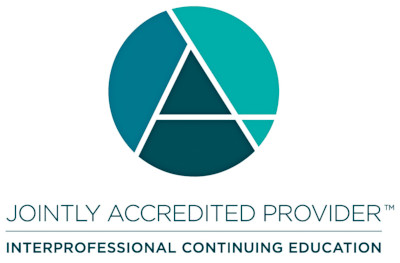Data Approaches to Target Community Needs for Interprofessional Education (IPE)
The objectives of this seminar are for participants to
- Examine matrix analysis approaches to align relationships of quality improvement and research initiatives with regulatory requirements and community assessments that target interprofessional community-embedded curriculum development
- Identify interprofessional academic-practice team needs, goals and objectives for population health mapping
- Discuss strategies to perform community needs’ assessments across geospatial dimensions
The design of community-engaged, interprofessional clinical learning environments (CLEs) requires integration of data-based knowledge about community need and focused thinking about the characteristics of CLEs that make them effective in serving their local communities. Recent work on CLEs has illuminated their foundational elements, such as teamwork and collaborative culture. For community-embedded IPE curriculum, these elements must be aligned with specific community strengths and barriers to health and well-being. Currently, there are limited approaches to capture critical community characteristics at the level of detail needed, or to guide their integration with the design and delivery of community-embedded curriculum. This Seminar describes two approaches, matrix analysis and geo-mapping, to accomplish these goals.
Our search for effective data collection and analysis approaches is part of a funded interprofessional project to design a new model for primary care CLEs. To launch this project, we conducted focus groups of key stakeholders for primary care CLEs and an extensive literature review. Our first approach, matrix analysis, emerged from the need to organize extensive qualitative data and interpret it in the context of reports and accreditation guidelines relevant to CLEs. Matrix development was also a useful technique to target small tests of change within our project initiatives. We will share approaches to design matrices as a useful way to identify themes and trends to guide CLE development.
The second approach, geo-mapping, was used to align desired CLE characteristics from the matrix analysis with specific community need and curriculum design. We are using geo-maps at the zip code level to identify community health needs including social determinants of the population. Together with matrix analysis, geo-mapping will help prioritize content and clinical experiences for interprofessional community-embedded primary care. Collaborating with other community-need focused entities provides opportunities to embed learners for deeper ongoing community knowledge and connection.
Participants in this Seminar will learn two data management approaches to assist them in designing IPE around community needs. They will understand ways to integrate diverse CLE and community characteristics to support meaningful and effective curriculum design to address population needs.
The outline for the seminar is:
- Introduction to the seminar (5 minutes)
- Review of Seminar Goals
- Polling activity, e.g. “How many are engaged in developing or have developed community- embedded curricula?”
- Discussion of matrix analysis techniques (15 minutes)
- Developing a basic matrix
- “Code dictionary” creation
- Our interprofessional academic-research partnership matrix development strategy and analysis approaches
- Survey of Audience Experience e.g. “What approaches to have you used to inform your CLE/research initiatives of the local health needs?”
- Determining the health needs of your CLE (15 minutes)
- Polling activity, e.g. “how many have employed geospatial health mapping to target community- needs?”
- Health mapping data resources and capabilities
- Application of the geographic approach to health mapping
- Contextualizing health at the local level
- Small group discussion: “How have you located localized data that you found beneficial for informing your community-embedded curriculum?” (5 minutes)
- Collaborating with cartographers to visualize health data (10 minutes)
- Concluding activity: (5 minutes)
- Large group interaction: “Let’s build a map together: Please submit in chat your desired map layer to create context for an ideal community-embedded CLE.”
As a result of participating in this 60-minute seminar, participants will learn about ways to integrate desired CLE and community characteristics to support meaningful and effective curriculum design.
In support of improving patient care, this activity is planned and implemented by The National Center for Interprofessional Practice and Education Office of Interprofessional Continuing Professional Development (OICPD). The OICPD is accredited by the Accreditation Council for Continuing Medical Education (ACCME), the Accreditation Council for Pharmacy Education (ACPE), and the American Nurses Credentialing Center (ANCC) to provide continuing education for the healthcare team.
This activity was planned by and for the healthcare team, and learners will receive Interprofessional Continuing Education (IPCE) credit for learning and change.


Physicians: The National Center for Interprofessional Practice and Education designates this live activity for AMA PRA Category 1 Credits™.
Physician Assistants: The American Academy of Physician Assistants (AAPA) accepts credit from organizations accredited by the ACCME.
Nurses: Participants will be awarded contact hours of credit for attendance at this workshop.
Nurse Practitioners: The American Academy of Nurse Practitioners Certification Program (AANPCP) accepts credit from organizations accredited by the ACCME and ANCC.
Pharmacists and Pharmacy Technicians: This activity is approved for contact hours.
IPCE: This activity was planned by and for the healthcare team, and learners will receive Interprofessional Continuing Education (IPCE) credits for learning and change









